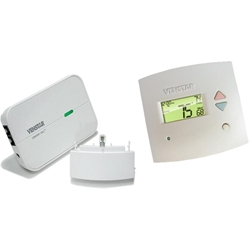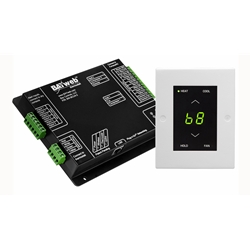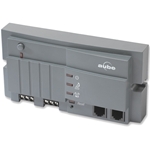Does adding remote temperature control to your home intrigue you? If so, how do you choose from the latest remote thermostat models out there? Are “smart” thermostats worth the investment? Do less expensive remote thermostats do that much less? Will any remote thermostat work at your location? Choosing a remote control thermostat is easy if you use this selection process:
 1) Where do you plan to use it?
1) Where do you plan to use it?
2) What do you want it do?
3) How do you want to control it?
Where do you want remote temperature control?
Here’s the first thing you need to know when choosing a remote control thermostat: all models need a way to communicate. What kind of communications is available in your home or apartment? Internet, WiFi, landline telephone or cellular? The type of communications you have immediately defines what remote thermostats will work in your home.
 Smart thermostats — also called Internet thermostats — require a 24/7 high-speed Internet connection. Some connect to your router wirelessly and other types use an Ethernet connection.
Smart thermostats — also called Internet thermostats — require a 24/7 high-speed Internet connection. Some connect to your router wirelessly and other types use an Ethernet connection.
- Phone-controlled thermostats communicate through a landline telephone connection. They can also use a cellular phone connection by adding a piece of equipment called a cellular terminal.
The Upshot: If your house or apartment has year-round Internet service, you can opt for a smart thermostat. If you only have landline phone service, you can still get remote temperature control by choosing a phone-enabled model. Homes without Internet or landline service, or vacation homes where service is terminated during the off-season, may still have remote temperature control if there’s a strong, reliable cellular signal at their location.
 What do you want your remote thermostat to do?
What do you want your remote thermostat to do?
Most remote thermostats are multi-functional and offer a range of additional features along with remote temperature control. Once you’ve narrowed down your choices between a smart (Internet) thermostat and a phone-controlled thermostat, look at the extra capabilities available and decide which are important to you, such as:
- Real time indoor and outdoor temperature status reports
- Humidity reports (great for monitoring vacation homes in the sunbelt)
- Power outage alerts (which can lead to potential problems if prolonged)
- Freezing temperature alerts (indicating a possible heating system failure)
- High temperature alerts (indicating a possible A/C system failure)
- Energy usage reports
The Upshot: Many techies will appreciate and use the many extra features that an advanced smart thermostat offers. Other homeowners don’t need the bells and whistles and just want the ability to turn the heat on or off remotely. This Comparison Chart provides a quick overview of some of today’s more popular remote thermostats. Note that you may need optional sensors to monitor for humidity, motion, water leaks and sump pump overflows.
 How do you want to control your remote thermostat?
How do you want to control your remote thermostat?
For optimum convenience, a smart thermostat can be controlled from anywhere using a smartphone, computer or tablet. You can do things like turning up the heat from your iPhone before you leave the office or turn off the central A/C from your office desktop. A smart thermostat also allows you to view your energy savings in real time on an app interface and receive text message or email alerts.
However, if you don’t have a smartphone or want a more affordable way to make temperature adjustments from afar, a phone-controlled thermostat lets you control temperature remotely using any kind of phone. For a really economical solution, look for one of the basic models that toggles between a high and low temperature set point.
Summary
There are a wide range of thermostats on the market that provide remote temperature control along with other conveniences, capabilities and energy saving features. Begin your shopping by applying the “where, what and how” process discussed in this article. Next, be sure to select a model that’s compatible with your type of heating system. If you’re still debating whether to invest in a smart thermostat, read the article “Should you Upgrade to a Smart Thermostat?”



